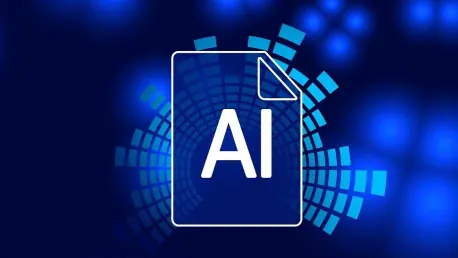The landscape of app development is on the brink of a significant transformation. By 2025, rapid advancements in artificial intelligence (AI), Internet of Things (IoT), augmented and virtual reality (AR/VR), and stringent privacy and ethical data usage practices are expected to reshape the industry. Amro Hassan, VP of Product and Engineering at Kochava, provides an insightful analysis of these impending changes, highlighting the challenges and opportunities developers will face.
Advancements in Artificial Intelligence (AI)
Proliferation of AI-Enabled Applications
The deployment of AI-enabled applications has been accelerating since the introduction of AI tools like ChatGPT in late 2022. By the end of 2024, enterprises are expected to nearly double their use of AI-enabled applications. This surge is driven by the need to interact with users via natural language and conversational interfaces such as text, gestures, or voice. Consequently, app developers must develop proficiency in creating, deploying, and integrating with Large Language Models (LLMs) to meet these evolving user expectations.
AI-enabled applications are becoming essential in numerous fields, including customer service, healthcare, and finance. This growing dependence on intelligent systems requires developers to stay up-to-date with the latest advancements in AI technology. Training their models to recognize and respond accurately to various user inputs is crucial. The importance of natural language processing and machine learning capabilities cannot be overstated, as these technologies enable the development of more intuitive and responsive applications that cater to diverse user needs.
Local AI Implementation
A growing concern among large enterprises is the potential security and privacy risks associated with third-party generative AI services like ChatGPT. Companies such as Apple, Spotify, and Wells Fargo have already prohibited the use of ChatGPT to prevent customer data and source code leakage. To mitigate these risks, many organizations are turning to local deployments of open-source LLMs like Databrick’s Dolly and Meta’s Llama. Downloads of Meta’s Llama models surged tenfold in 2024 compared to 2023, and this trend is expected to continue. App developers must not only integrate with third-party AI services but also acquire the skills to build and deploy LLMs locally.
Implementing AI locally offers several benefits, including enhanced security, greater control over the data, and the ability to customize models to meet specific business needs. This approach reduces reliance on external providers and ensures that sensitive information remains within the organization. Developers must become adept at working with open-source tools and frameworks, which requires continuous learning and adaptation. This expertise is pivotal in maintaining the balance between leveraging powerful AI capabilities and safeguarding user privacy.
Agentic AI Systems
Agentic AI systems, characterized by their ability to perform complex tasks and workflows with minimal user oversight, are poised to revolutionize various applications, including financial management and automated customer support. These systems leverage real-time and predictive analytics, LLMs to orchestrate actions, and reinforcement learning to improve over time. As a result, users will interact with applications in a more passive manner, with the systems detecting data or system state drifts and notifying users only when input is required. This shift necessitates simpler user interfaces while placing greater emphasis on accuracy and quality.
The use of agentic AI systems signifies a departure from traditional manual interactions with applications. By automating routine processes and providing timely alerts, these systems enhance efficiency and user satisfaction. Developers face the challenge of ensuring that the AI systems are robust, reliable, and capable of handling unforeseen situations. This involves rigorous testing, validation, and continuous monitoring to fine-tune the AI’s performance. As these technologies evolve, the role of developers will increasingly focus on overseeing, managing, and refining these advanced systems.
Generative AI for Code Generation
Enhancing Developer Productivity
In addition to building conversational interfaces, app developers are increasingly utilizing generative AI tools like GitHub’s Copilot to automate coding and enhance productivity. A GitHub study revealed that developers who used Copilot completed tasks 55% faster than those who did not use the tool. The adoption of code generation tools is expected to accelerate in 2025, significantly boosting developer efficiency and reducing the time required to bring applications to market.
Generative AI tools are transforming the coding landscape by automating repetitive tasks and suggesting code snippets to expedite the development process. This allows developers to focus on more complex and creative aspects of coding, leading to more innovative solutions and higher-quality applications. By leveraging these tools, developers can minimize errors, streamline workflows, and accelerate project timelines, ultimately meeting the growing demand for efficient and rapid app deployment.
Streamlining Development Processes
Generative AI tools are not only enhancing productivity but also streamlining development processes. By automating repetitive coding tasks, developers can focus on more complex and creative aspects of app development. This shift allows for faster iteration cycles and more innovative solutions, ultimately leading to higher-quality applications that better meet user needs.
The integration of generative AI into development workflows fosters an environment of continuous improvement and collaboration. Developers can quickly iterate on their designs, receive real-time feedback, and implement changes more efficiently. This iterative approach encourages experimentation and innovation, allowing developers to explore new ideas without the constraints of traditional coding practices. As generative AI tools become more sophisticated, their impact on the app development process will likely expand, driving even greater advancements in the industry.
Internet of Things (IoT) and Connected Devices
Evolution of User Interaction Patterns
The past decade has witnessed a proliferation of internet-connected devices, including gaming consoles, televisions, and wearables, fundamentally altering user interaction patterns. Significant strides in AR/VR technologies are also contributing to this evolution. As more devices become interconnected, app developers must adapt to create seamless experiences across various platforms and touchpoints.
Interconnected devices are leading to the development of ecosystems where apps and services can communicate and collaborate in real-time. This connectivity enables users to transition seamlessly between devices, enhancing convenience and engagement. Developers must ensure that their applications are compatible with a wide range of devices and can integrate smoothly into these ecosystems. This requires a deep understanding of different platforms, interfaces, and communication protocols to deliver a cohesive and intuitive user experience.
Integration with AR/VR Technologies
With the release of Apple’s Vision Pro and Meta’s Orion AR glasses in 2024, AR/VR technologies are becoming more mainstream. Online retailers are increasingly using AR to enhance customer engagement, leading to a 94% higher conversion rate, according to a study by Deloitte Digital and Snap Inc. This trend is expected to accelerate in 2025, compelling app developers to create immersive user experiences leveraging various interfaces like hand gestures and voice commands.
The integration of AR/VR technologies opens new avenues for creating immersive and interactive applications. Developers must harness the potential of these technologies to design experiences that captivate users and provide tangible benefits. This involves experimenting with different interaction methods, such as hand gestures, voice commands, and spatial awareness. By leveraging the capabilities of AR/VR, developers can create applications that offer unique, engaging, and memorable experiences, thereby driving user retention and satisfaction.
Cross-Platform Frameworks
Adoption of Cross-Platform Frameworks
Given the proliferation of connected devices, app developers are adopting cross-platform frameworks to reach users across multiple touchpoints, mediums, and platforms consistently. Flutter, an open-source cross-platform framework created by Google, is utilized by approximately two million developers globally. The adoption of such frameworks is anticipated to grow in 2025, as developers aim to deliver a seamless user experience across the web, mobile, and other mediums.
Cross-platform frameworks provide a unified approach to app development, enabling developers to write code once and deploy it across multiple platforms. This reduces development time, minimizes costs, and ensures a consistent user experience. By leveraging these frameworks, developers can focus on creating high-quality applications that perform well on various devices. The flexibility and efficiency offered by cross-platform frameworks make them an attractive option for developers seeking to maximize their reach and impact in the ever-evolving app development landscape.
Benefits of Cross-Platform Development
Cross-platform frameworks offer numerous benefits, including reduced development time, cost savings, and a unified codebase. By leveraging these frameworks, developers can ensure that their applications provide a consistent user experience regardless of the device or platform. This approach not only enhances user satisfaction but also simplifies maintenance and updates, making it easier to roll out new features and improvements.
The ability to maintain a single codebase for multiple platforms streamlines the development process and minimizes the potential for errors. Developers can quickly identify and fix issues, ensuring that applications remain reliable and performant. Additionally, cross-platform development fosters collaboration within teams, as developers can work on a unified project rather than managing separate codebases for each platform. This collaborative environment encourages innovation and the sharing of best practices, leading to more robust and user-friendly applications.
Privacy and Ethical Data Use
Privacy-First Design
The privacy landscape has undergone substantial changes over the past decade, with regulations like GDPR and industry-specific mandates such as SOC and HIPAA dictating stringent data-handling practices. App developers must adapt to these evolving requirements to ensure compliance and foster user trust. As privacy concerns intensify, development processes are expected to evolve toward a privacy-first design approach. This involves incorporating privacy considerations early in the development process, minimizing data collection to essentials needed for app functionality, and enhancing transparency and user controls.
By considering privacy from the initial design phase, developers can ensure that user privacy becomes the default setting wherever possible. This proactive approach not only helps in complying with regulations but also builds user trust and confidence. Developers must stay informed about the latest privacy standards and best practices, continuously updating their knowledge and skills to keep pace with the evolving landscape. By prioritizing privacy, developers can create applications that respect user data and promote a culture of ethical data use.
Ethical Data Use
The landscape of app development is on the verge of a major transformation, driven by several emerging technologies and practices. By 2025, advancements in artificial intelligence (AI) are expected to significantly alter how apps are designed and function, making them smarter and more personalized. The Internet of Things (IoT) will likely create a more interconnected app ecosystem, providing seamless experiences across a wide range of devices. Augmented reality (AR) and virtual reality (VR) are poised to revolutionize user interaction by offering immersive experiences that were previously unimaginable. Additionally, stricter privacy regulations and ethical data usage practices will become critical, compelling developers to find innovative solutions that prioritize user trust and data security.
Amro Hassan, Vice President of Product and Engineering at Kochava, offers an insightful perspective on these upcoming changes. According to Hassan, developers will face a host of new challenges but will also encounter numerous opportunities to innovate and push the boundaries of technology. As these trends unfold, the app development industry is set for a dynamic and exciting shift.








